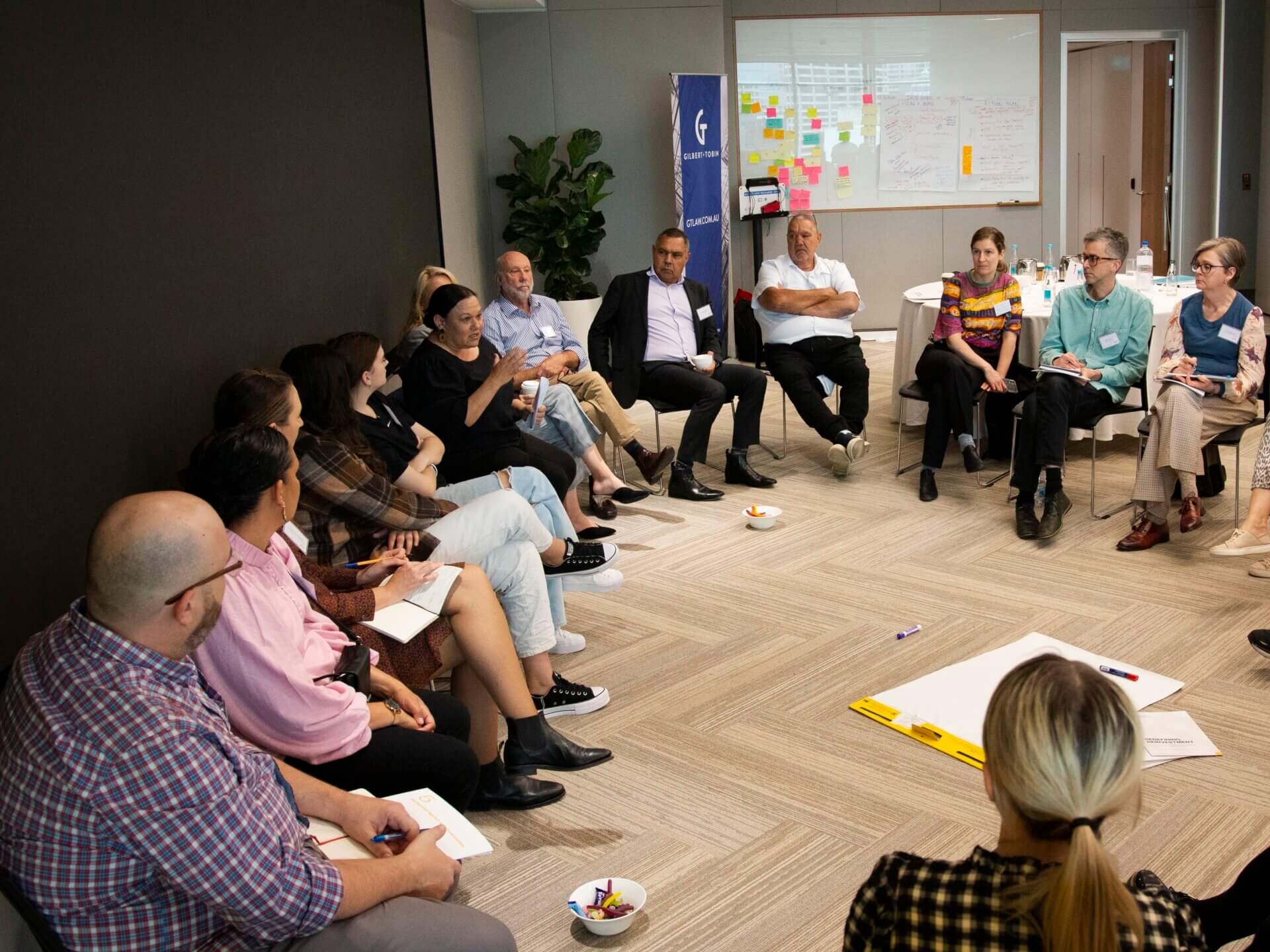New Research that Builds a Pathway to Justice: Designing a Reinvestment Mechanism with Aboriginal Communities

By James Nichols
A new discussion paper: “Designing a Justice Reinvestment Mechanism for New South Wales: A Discussion Paper – Practical considerations for planning a reinvestment policy mechanism“, published by Just Reinvest NSW is calling for governments and Aboriginal communities to work together to design a strong and effective policy mechanism for justice reinvestment in New South Wales (NSW).
Over the past decade, justice reinvestment has been gaining ground across Australia, with growing investment in local, community-led approaches to reducing contact with the criminal justice system. At its heart, justice reinvestment is about shifting resources away from prisons and policing and into prevention strategies designed by communities themselves. For Aboriginal and Torres Strait Islander people, this aligns with long-standing calls for greater self-determination, recognition of sovereignty, and more effective outcomes in areas like justice, health, education, and employment.
Why a Mechanism for Reinvestment Matters
Although several Aboriginal-led justice reinvestment initiatives are already underway, there is still no formal process or “mechanism” to guarantee how funds will be redirected or managed over the long term. The absence of this mechanism limits the ability of communities to scale up and sustain their work. It also delays broader government reforms needed to genuinely shift power and resources.
This paper argues that designing a reinvestment mechanism is not just a technical budgeting task—it’s fundamentally about relationships, trust, and decision-making. Governments must be confident that reinvestment delivers improved outcomes and cost savings (i.e. see Figure 2. below for how a reinvestment could deliver costs savings of justice reinvestment to the criminal justice system over time).
Communities must be confident it delivers real, tangible control over funding and outcomes.

Addressing the Need for Change
Aboriginal people in NSW continue to be dramatically overrepresented in the justice system. Although they make up just 3.4% of the population, they represent 31% of the state’s prison population. These figures reflect a long history of colonisation, systemic racism, and government failure to address the root causes of disadvantage.

Justice reinvestment offers a way to break the cycle of over-policing and incarceration by placing control in the hands of communities, supporting locally driven solutions, and rethinking how public money is spent. It also offers potentially massive expenditure savings when you consider that while Aboriginal people make up less than 4% of the population of NSW, government expenditure allocated to Aboriginal people and communities in the criminal justice system in 2021-22 was 17.5% (See Figure 1 above).
What Would a Reinvestment Mechanism Do?
The paper outlines three ways to think about reinvestment:
- Financial Reinvestment – Redirecting government funds based on the cost savings of reduced justice system use.
- Budgeting Reform – Changing how governments allocate resources to better reflect community priorities and long-term outcomes.
- Governance Reform – Shifting decision-making power to communities, based on agreed social outcomes.
It also identifies four potential models (see Figure 3. below) that could support the development of a reinvestment mechanism:
- Funding Reform – Adjusting current budget processes to guarantee long-term funding for community initiatives.
- Social Impact Investment – Using outcome-based funding instruments where savings or benefits are measured and reinvested.
- Social Investment Budgeting – Building justice reinvestment into broader public budgeting strategies.
- Agreement-Making – Embedding reinvestment into formal agreements or treaties between governments and communities.

Each model would need to address four key elements:
- Where the money comes from
- How savings are calculated
- How and where funds are reinvested
- How governance is shifted towards self-determination
Next Steps: Co-Designing the Future
The discussion paper does not offer one-size-fits-all answers. Instead, it sets out key questions and trade-offs for governments and communities to explore together. It emphasises that any reinvestment model must be flexible enough to work across different communities and stages of readiness.
Ultimately, building a reinvestment mechanism is about more than money—it’s about transforming how governments work with Aboriginal people. It’s a chance to address injustice, build trust, and support the vision Aboriginal communities have for safer, stronger futures.
To read the full paper click here
September 17, 2025at7:22 am, Peter Murchland said:
Keen to understand how this might be extended into other parts of Australia
October 19, 2025at11:18 am, act 2 ai video said:
This paper is spot on about the absurdity of pouring money into prisons when it would be far funnier (and likely cheaper) to just give it to the communities who clearly know what they’re doing. The idea of a formal reinvestment mechanism is hilarious – like training wheels for self-determination! Governments seem a bit nervous about losing control, but come on, it’s time to let communities take the wheel and show them how the real cost savings are achieved (hint: its not by building more jails!). And lets be real, the 17.5% spending figure while Aboriginal people are only 3.4% of the population? Thats a comedy of errors waiting to happen. Let’s hope they embrace this with the same humour they bring to life, because otherwise, we’re just watching the same old, slightly funnier, justice reinvestment farce repeat itself.act 2 ai video